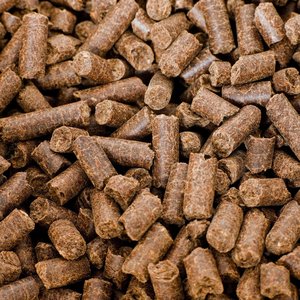NCE Seafood Innovation launched its first industry insight report Future ingredients for Norwegian salmon feed which addresses the gap between the ambitions stated by the Norwegian government that all aquafeeds will come from sustainable ingredient sources by 2030 and the status of future feed ingredients towards 2030. Research institutions, industry pioneers and a panel of sector specialists have contributed to summing up the accumulated knowledge and pointing at challenges that need to be resolved to barriers and possibilities for novel feed ingredients.
“Our ambition is that this report will give ‘industry insight’ in an effective format and that it will contribute to the knowledge foundation in strategy processes at companies and industry stakeholders in the field, as well as providing a foundation for political discussions around this topic,” managing director, Nina Stangeland stated.
Mind the gap
The Norwegian government's ambitions state that all salmon feed should be sustainable by 2030, and more ingredients should come from Norway and carbon capture inputs. “The gap between ambition and practice is larger than most people imagine – and the demand from the industry remains unsatisfied,” Stangeland said.
The report suggests that an increased feed volume of approximately 1 million tonnes is necessary to meet the country’s growth ambitions by 2030. The analysis indicates that only 140,000 of the 1 million tonnes can be met by novel, Norwegian-produced ingredients. In other words, there is a significant gap between the current volume and the planned volume growth, the report says. Looking at existing value chains and improving their sustainability will therefore also be necessary.
Among the ingredients with the highest volume potentials by 2030 are blue mussels, land animal byproducts, and photoautotrophic microalgae. The report suggests that, in the short term, they are likely to contribute to the largest volumes of future feed ingredients.
However, overcoming the barriers to growth is essential. Lack of regulatory framework, national strategy, funding, and customer acceptance are among the obstacles going forward. Working to overcome this is not easy, according to chairman of the Board at NCE Seafood Innovation, Einar Wathne.
“There is enormous potential in improving the footprint of feed and thus of farmed salmon. It will require to challenge the present, make some bold decisions, changes, and upfront investments, collaborate in the value chain and communicate the message to the consumer,” Wathne said.
Critical success factors
To meet national ambitions for feed and salmon production towards 2030, the report identifies four critical success factors:
- Meeting future demand through a portfolio of resources.
- Developing an overall strategy for bioresources.
- Developing a strategy for sustainable feed ingredients.
- Introducing incentives to scale-up production of Norwegian feed ingredients.
Download the report at the link below.










